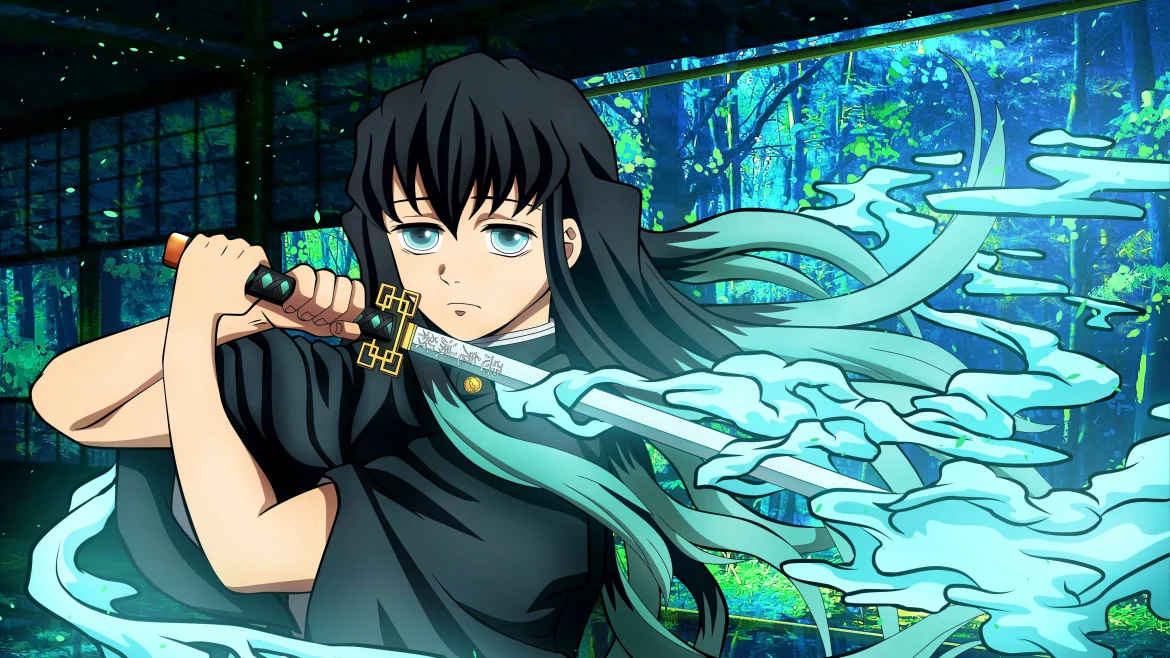Muichiro Tokito, a pivotal character in “Demon Slayer,” is known for his role as the Mist Hashira among the Demon Slayer Corps. His death occurs during the intense battles in the Infinity Castle arc, which is one of the climactic phases of the series.
Early Life and Background
Muichiro was incredibly talented, albeit initially aloof, gaining the rank of a Hashira within just two months of joining the corps—an unprecedented feat. His twin brother’s death profoundly impacted him, fueling his resolve to fight demons and protect humanity.
The Infinity Castle Arc
During the assault on Muzan Kibutsuji’s Infinity Castle, Muichiro faces off against various demons. His most notable battle is with Kokushibo, the Upper Moon One, who turns out to be a transformed version of his own ancestor. This battle is crucial, not just for Muichiro but for the narrative of “Demon Slayer,” as it links familial legacies with the ongoing conflict.
The Battle Against Kokushibo
Muichiro uses his Mist Breathing techniques to fight Kokushibo, showcasing his exceptional skills and growth. However, Kokushibo’s strength and centuries of combat experience as a demon give him a significant advantage. Muichiro, alongside other Demon Slayers, struggles to keep up with Kokushibo’s devastating attacks.
The Final Moments
Muichiro’s death is both heroic and tragic. After a fierce and exhausting battle, he sustains severe injuries. In his dying moments, Muichiro unlocks a new level of his swordsmanship, contributing significantly to weakening Kokushibo. His efforts, combined with those of Gyomei Himejima, the Stone Hashira, eventually lead to Kokushibo’s downfall. However, Muichiro succumbs to his injuries and passes away, his last thoughts being of his brother and his duty as a Demon Slayer.
Expanded Analysis of Muichiro Tokito’s Death
Muichiro Tokito stands out in “Demon Slayer” not only for his combat prowess but also for his profound character development and the thematic weight his story carries. His journey from a detached, memory-lost boy to one of the most powerful members of the Demon Slayer Corps encapsulates themes of growth, legacy, and sacrifice.
Character Development
Muichiro lost his memories as a child due to a tragic accident that also claimed his twin brother’s life. This loss greatly shaped his personality, making him seem distant and disconnected from those around him. However, his progression throughout the series is marked by gradual recovery of these memories, paralleling his growing commitment to his duties as a Hashira. This evolution is pivotal as it not only enhances his abilities but also rekindles his emotional connections, making his ultimate sacrifice all the more poignant.
see also: Who is the Oldest Demon in Demon Slayer?
The Significance of the Battle with Kokushibo
The confrontation with Kokushibo, a former demon slayer turned demon, who is also their ancestor, is laden with historical irony and emotional complexity. Kokushibo, who was once a samurai named Michikatsu Tsugikuni, turned into a demon to overcome what he perceived as the limits of human strength and lifespan. This battle is not just a physical fight but a confrontation with the past and what it means to fight against one’s bloodline for the greater good.
Techniques and Strategies
During the battle, Muichiro employs advanced Mist Breathing techniques, which are uniquely suited to his ephemeral and unpredictable fighting style. He adapts and evolves these techniques mid-battle, showcasing his genius and the depths of his strategic mind. His development of new forms and techniques even in the face of imminent death highlights his character’s resilience and adaptability.
Heroic Sacrifice and Its Impact
Muichiro’s final act is a quintessential example of the “heroic sacrifice” trope often seen in shonen anime and manga. His ability to push beyond his limits and contribute to Kokushibo’s defeat, even as he sustains fatal injuries, serves to underscore the themes of self-sacrifice and duty. His death is not just a personal loss but a narrative device that galvanizes the other characters, especially the younger slayers, to fight with renewed vigor and determination.
Thematic Resonance
Muichiro’s story arc resonates with the larger themes of “Demon Slayer,” such as the burden of legacy, the cycle of vengeance, and the costs of war. His death serves as a critical juncture in the series, reminding both the characters and the audience of the grave stakes involved in the battle against demons. It also raises poignant questions about fate, family, and the meaning of strength—themes that are explored through other characters and battles in the series.
Conclusion
Muichiro Tokito’s death in “Demon Slayer” is a deeply impactful moment, rich with narrative and emotional complexity. Through his development, battle, and ultimate sacrifice, he embodies the themes of legacy, sacrifice, and human resilience that are central to the series. His legacy continues to influence the story long after his passing, marking him as one of the most memorable characters in “Demon Slayer.”


